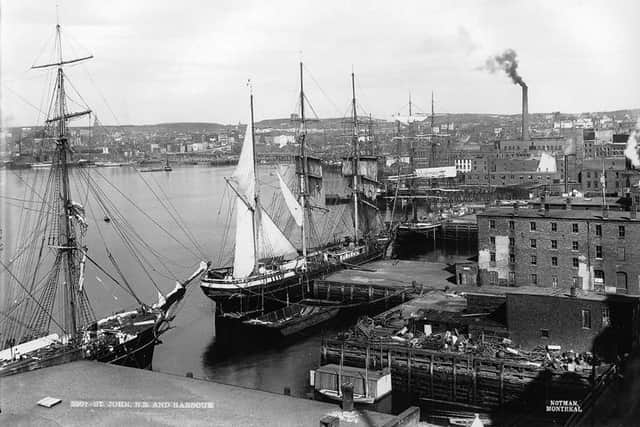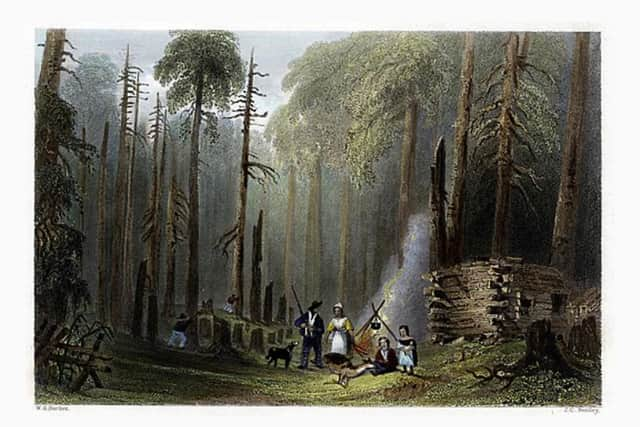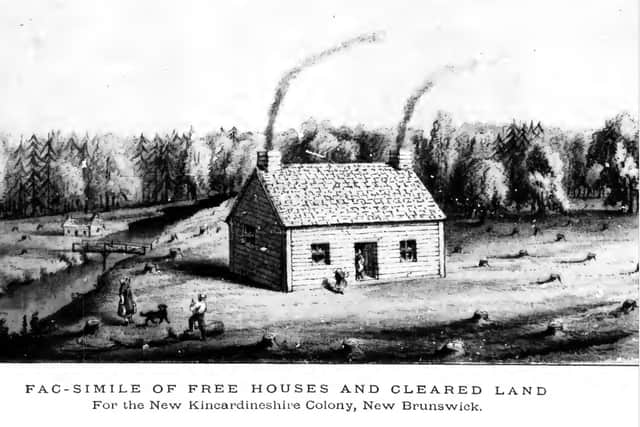150 years since a Scots colony was born on a promise of peace and harmony
In 1872, the mood in Stonehaven was a hopeful one as Captain William Brown spread the word of his vision for a colony of New Kincardineshire. Public meetings were held, pamphlets were published and posters advertising the prospect of new beginnings appeared windows across Stonehaven. Interest was piqued as promises of log houses on the the riverbanks of North Brunswick in present day Canada were sold to tenants farmers, labourers and their families in this corner of north east Scotland.
Captain Brown, a regular sailor across the Atlantic, made his vision clear in his colony prospectus published and widely distributed in 1872, the same year that the provincial government in New Brunswick passed a law allowing free grants of land to encourage emigration.
Advertisement
Hide AdAdvertisement
Hide AdHe wrote: “In New Kincardineshire, covering an area of 10 miles by 20 of the finest land and enclosed by good natural boundaries, there will be but one form of society, social customs and schools; one of politics, one language and one religion.


“These are the great foundation pillars on which the social, moral and political harmony and happiness of a community must stand, in order to be solid, cohesive and enduring, and on these our Colony be built.”
This was to be a colony built free from the “embittering of social and political feelings” and the “mixing and confusion of language and creeds.”
The only requirements for entry were a hardworking ethos – and a Presbyterian faith.
He added: “We may probably have neighbours of other creeds beyond our borders; but as our church and school system and politics will be entirely distinct from theirs, we will thus be able to be good neighbours, and enjoy the peace and comfort that flows from system and unity.”


Brown secured 50,000 acres for New Kincardineshire – today known as the Scotch Colony – with an agreement reached with provincial government officials in August 1872 in for Captain Brown to bring out 100 Scottish families.
Meanwhile, the provincial government agreed to prepare 100 lots, construct 90 log homes, build roads and prepare land for planting in the first spring, according to a record in the Provincial Archives of New Brunswick.
On the night of Friday, April 25 1873, around 500 men, women, and children stood on the wharf at Mavis Bank on the southside of the River Clyde, close to the site of today’s Finnieston Bridge, to board the Castalia for their new life, with a large crowd gathering to witness the departure.
Advertisement
Hide AdAdvertisement
Hide AdTowards the evening, the Rev. Dr Adams, the convener of the Free Church Colonial Committee, which was set up following the Disruption of the Church of Scotland to encourage dissenting ministers to emigrate, boarded the Castalia to bid the emigrants farewell with a recital of Psalm 23. Around 11pm the Castalia left its moorings, with one account suggesting it was the first ship to leave a British port without a single case of intoxication on board.


Almost three weeks later, on May 10, the ship arrived at the seaport city of St John “to the great relief of everyone on board” with an additional passenger on board . A baby girl was born on April 30 and named Castalia after the ship.
By May 14, all Scots had arrived at their onward destination – but the colonists’ promise quickly started to crumble for many.
“The excitement of reaching New Kincardineshire soon turned to dismay when colonists discovered the promises made in Captain Brown's prospectus had not been fulfilled,” an an article by the New Brunswick Provincial Archive said.
"Of the 90 log cabins that were to be built, only 40 had been started and just two completed. To add to these problems, no land had been cleared and made ready for cropping, the logging road into the settlement had not been completed, no roadways within the settlement had been built, the upland areas were still covered with two feet of snow, and the ground in low-lying areas had turned to mud, making travel difficult,” it added.


Tents were “hastily” secured from the militia with news of the colonists’ woes soon making its way home, the article continued. A letter written by David Taylor, the former editor of the Stonehaven Journal who travelled to the colony and quickly returned home, was published in the Scottish press.
It said: “The people that came out are leaving the place by the dozen, and I expect that before the summer is over they will all have vanished. Part of the colonists arrived here on Monday and the other part on Tuesday evening, and since that time their luggage has been lying about on the river bank and all is disorder and confusion.”
Some blamed Captain Brown for bringing out too many people at once, while others claimed the provincial government had been inadequately prepared. Others thought it was the late spring that held back the development. The predictions of exodus did not quite materialise, however. A number did leave for the United States but just under 450 remained to work the land. By mid-June around half of them were in their log homes.
Advertisement
Hide AdAdvertisement
Hide AdThe archive article added: “The colonists who remained set to work felling trees, pulling stumps, and piling logs. This was heavy work at the best of times, but particularly for former farmers, labourers, and tradesmen who lacked skills in swinging axes and using saws. Swarms of black flies and mosquitoes plagued the newcomers.”
A small harvest and high food prices followed, with some Scots relying on charity to survive with others leaving altogether to work as labourers or farmers – or to return home.
For those who persevered, a little corner of Scotland started to take shape. Regular worship defined life, with dances, violin lessons and the annual Burns Night helping to solidify the colony. Settlements of Kintore, Upper Kintore and Balmoral emerged and 210 more Scots arrived in 1874. Grievances did persist, however, with hard-fought compensation paid to 30 Scots to help mend the lost promises of the colonists’ dream.
Celebrations of the 150th anniversary have been held across the Scotch Colony with an exhibition on display at the Tolbooth Museum in Stonehaven.
Comments
Want to join the conversation? Please or to comment on this article.